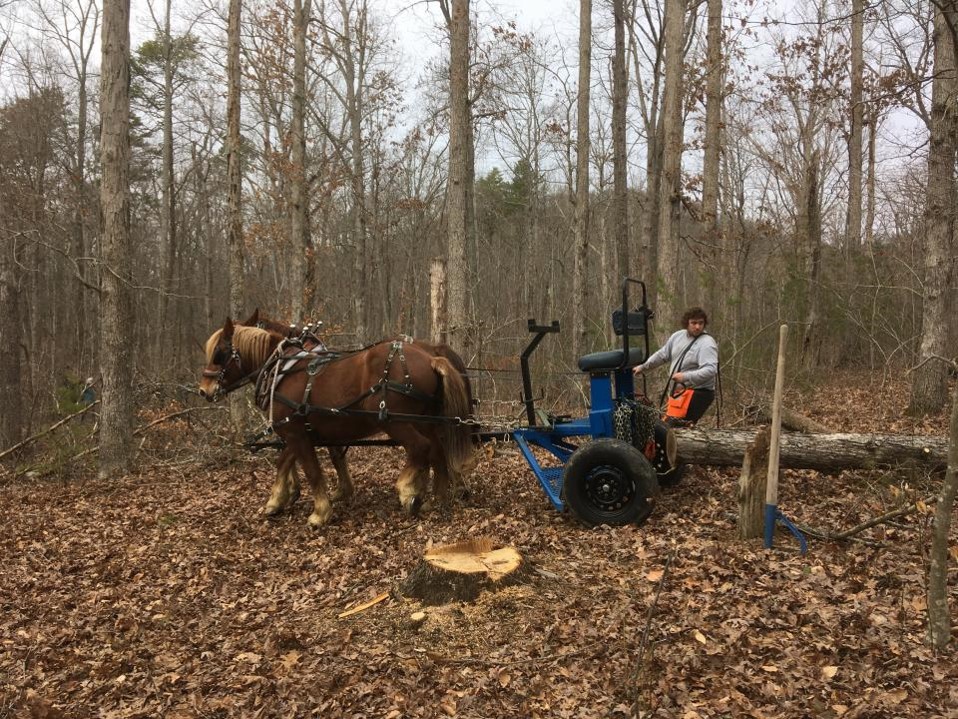Experience the Adventure!
Berea College currently manages over 9,000 acres of forest land and offers both classes and outreach programs related to forestry. Under the guidance of Forester Silas Mason, Berea's forestry effort began at the dawn of the American conservation movement in 1897. Clint Patterson now serves as the tenth College Forester. The College Forest is uniquely situated as part of this small private College with egalitarian ideals and a commitment to serve the Appalachian Regions. Management efforts focus on wood, water, wildlife and recreation, with an emphasis on sustainability. Nationally, forest management practices are marked by contentious debate. Perhaps the greatest value of the Berea College Forest is as a resource to demonstrate and evaluate the results of long-term forest management in the Southern Appalachian Region.
Learn about all aspects of the Forestry Department here.

Wood
In 100 years, 5,000 acres of the forest has produced some 16 million board feet of saw timber. It has also turned out a tremendous quantity of other wood products. Learn about how timber in the College forest is extracted here.

Water
Water from springs on the Forest began flowing the 5 miles to Berea by gravity in 1905. The first reservoir was built in 1920. Now, Berea has four reservoirs that provide the College and city with some of the cleanest drinking water in the country. Learn more here.
Rocks
Geology is the science that deals with the Earth's physical structure and substance, its history, and the processes that act on it. Geology guides humans in his search of fuels and minerals, assists engineers in designing and constructing structures to improve our environment, helps agriculturists interpret soil conditions, and aids tourists in understanding an area’s natural features. Kentucky has a diverse geological story. Click to learn more.

Wildlife
Wildlife Fields—60 acres: This involves areas that receive annual/biannual mowing to keep them in a field state for wildlife. They are located on the Fairchild tract, Silver Creek, Cowbell Creek, and Owsley Fork. They include area managed as savannah that could produce limited timber. Chestnut progeny orchards, a butternut progeny orchard, and a grafted nut tree plantation/agro-forestry area are included within this use area designation. Their uses are biodiversity, education, recreation (a trail runs through one of the areas on Fairchild), and food production.

Recreation
Each fall since 1875, Berea students have celebrated “Mountain Day” by hiking in the area of the College Forest. Year round hiking is available for the public.
Currently, some 12 miles of hiking trails are open to the public for day use. Active silviculture takes place along part of the trails for education/demonstration access. Some old growth stands may be viewed also.


